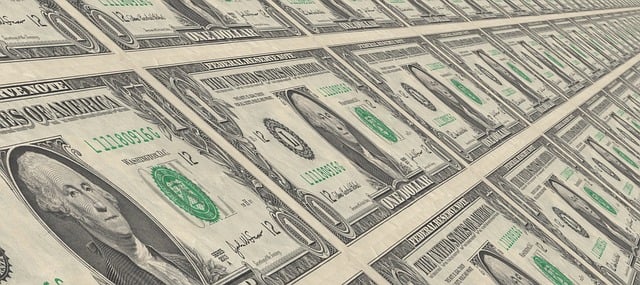
Draw Foreign Capital currency for most people, currency exchange rates are figures hidden deep in the business section of a newspaper or tucked away in an app they glance at before an overseas trip. Yet, considering how much these seemingly small numbers can influence individual lives or even national economies, it would make sense to display them prominently on the front page alongside the day’s weather. Currency exchange rates can behave like the weather—shifting rapidly and unpredictably, with results ranging from calm and favorable to turbulent and disruptive.
Most individuals usually deal only with their domestic currency Draw Foreign Capital—for example, the US dollar (USD). Their income, rent, mortgage, and car payments are all in dollars. While these amounts may occasionally change, they generally remain stable.
Read more about Technologies is Essential to Safeguard
Read more about Current rates of different currency
The situation is different for people traveling abroad who need to convert USD into another currency. A casual traveler exchanging small amounts may not notice that the cost of the foreign currency has changed since last month or last year. Frequent travelers, Draw Foreign Capital however, are more likely to be aware of how exchange rates fluctuate.
For instance, in late September 2024, one British pound was worth $1.34, but by mid-January 2025, it had dropped to $1.22—a decline of roughly 9%. This demonstrates how significantly exchange rates can shift, Draw Foreign Capital affecting the price of the same item in different periods.
The Economist created a method to compare prices internationally, based on the idea that exchange rates should adjust so that goods cost roughly the same across countries .For example, Draw Foreign Capital in March 2025 (the most recent data at the time), a Big Mac in South Africa cost 51.90 rand. With the US dollar–rand exchange rate at 18.16 rand per dollar, that would have equaled $2.85—much cheaper than the average US Big Mac price of $5.69. On the other hand, buying a Big Mac in Switzerland would have cost 7.10 Swiss francs, or about $8.05, making it far more expensive.
Fluctuations in exchange rates can influence not only the price of a home but also the cost of a mortgage, much to the dismay of many Polish borrowers. Homeowners opted for mortgages in Swiss francs because Swiss interest rates were only about a third of those in Polish zlotys. The exchange rates seemed “stable,” and the appealing interest rates made borrowing in Swiss francs so popular that it represented nearly 8 percent of Poland’s GDP.
Polish homeowners faced a shock when the Swiss National Bank, the country’s central bank, lifted the cap on its Draw Foreign Capital currency in mid-January 2015. The cap had originally been designed to prevent the Swiss franc from appreciating too much, which could have hurt exporters.
After years of maintaining the cap, the central bank concluded that continuing support was too costly and risky. As a result, some Polish borrowers with mortgages in Swiss francs suddenly saw their monthly payments in zlotys jump by 20%.
Although sudden and damaging to individuals and businesses, manipulating a nation’s exchange rate to achieve domestic economic goals is not uncommon. During the Great Depression, international trade and finance collapsed following the stock market crash in 1929, prompting countries to act independently to protect domestic manufacturers. Nations devalued their currencies to make exports cheaper and imposed tariffs to make imports more expensive. These ‘beggar-thy-neighbor’ tactics were easy to replicate, and as multiple countries pursued the same strategies, global trade nearly froze, deepening the economic crisis.
Some argue, however, that while these currency devaluations may have initially worsened conditions, countries that abandoned the gold standard and allowed their currencies to depreciate eventually saw improvements in their financial situations (Figure 1). Leaving the gold standard gave nations the flexibility to increase the money supply and stimulate demand.
Similar to the Great Depression, the 1997 Asian currency crisis was linked to unsustainable fixed exchange rates. However, instead of being tied to gold, the currencies in these Asian countries were linked to the US dollar.The central banks in these nations actively managed their currencies so that their values moved in line with the US dollar.
The crisis erupted in July 1997 when investors began selling large amounts of the Thai baht, doubting that Thailand’s central bank could maintain the currency’s fixed rate. When Thailand eventually let the baht float, the crisis quickly spread to other countries in the region.
Several factors contributed to the crisis. Besides Thailand, other countries also maintained currency pegs to the US dollar. A rise in the dollar’s value beginning in mid-1995 caused these pegged currencies to strengthen, making exports more expensive, slowing trade, and worsening trade deficits. These countries had borrowed heavily from foreign lenders at rates that became very costly when their currencies fell. Much of this borrowed money fueled stock and real estate bubbles, inflating prices to unsustainable levels.
The crisis had far-reaching political, economic, and social effects. In Indonesia, President Suharto could not control widespread riots triggered by sharp price hikes following the rupiah’s devaluation and was eventually forced to step down after 30 years in office. Resolving the crisis in the hardest-hit countries required a politically sensitive and costly $36 billion bailout from the International Monetary Fund.
Inflation soared, reaching nearly 60 percent in Indonesia and 7.5 percent in South Korea. Rising food prices particularly harmed the poor, who spent a large portion of their income on necessities. Joblessness also increased, climbing to 9.6 percent in the Philippines and 7.4 percent in South Korea. Real wages dropped sharply, falling 21% in Thailand and 27% in Indonesia. The emotional toll was severe, with suicides rising by over 10,000 across Hong Kong, South Korea, and Japan.
Currency crises may feel distant or like a thing of the past, yet it’s not impossible that the United States could face one. Rising costs for social programs such as Medicare and Social Security, combined with hefty interest payments on historically high debt levels, could trigger a dollar crisis. In the fiscal year 2025, through 31 January, social programs accounted for 34 percent of government expenditures, while net interest payments made up another 13 percent—just slightly less than what is spent on national defense.
In a 30 January 2025 opinion piece in the Wall Street Journal, House Budget Chairman Jodey Arrington predicts that by 2035, net interest payments could consume “almost a quarter of federal revenues, and roughly two-thirds of every borrowed dollar will be used to service the debt.” The Budget Chairman cautions that rising debt could hamper economic growth.
What is not mentioned is that unmanageable debt levels could also lead to sharp inflation, as the US borrows more to cover social program obligations and interest payments. Inflation would erode the value of the US dollar and could cause its exchange rates to decline steadily—or even plunge abruptly.
The risks to the US dollar illustrate how currency exchange functions much like electrical circuits: operating quietly in the background, often unnoticed, but critical to modern life. It’s only when disruptions occur that their importance becomes clear.
Major fluctuations in exchange rates can signal concerns about economic conditions, political instability, or crises such as armed conflicts. Monitoring currency trends and data helps explain the “why” behind economic events that can dramatically affect individuals and nations.
The value of one currency relative to another is typically influenced by factors such as interest rates, economic performance, GDP, and unemployment levels in the respective countries.
Known as market exchange rates, currency values are determined in the international marketplace where banks, investment managers, and speculators trade currencies continuously. This trading occurs in the forex (foreign exchange) market, which has no physical location or central owner. Exchange rates can shift frequently, either slightly throughout the day or in larger steps.
An exchange rate is usually represented by the currency codes of the countries involved. For instance, USD stands for the U.S. dollar, and EUR represents the euro. When quoting the pair for euros and dollars, it is written as EUR/USD.
For example, exchanging U.S. dollars for Japanese yen is noted as USD/JPY. An exchange rate of 100 indicates that one U.S. dollar is equal to 100 yen.Exchange rates can be either floating or fixed. Floating rates fluctuate according to market forces, while fixed rates are tied to another currency. For example, the Hong Kong dollar is pegged to the U.S. dollar within a range of 7.75 to 7.85, meaning its value against the dollar stays within that band.
Exchange rates have a spot rate, which reflects the current market value, and they may also have a forward rate, which predicts future changes in value. Forward rates vary based on expectations for interest rates in different countries. Traders might purchase dollars against euros if they anticipate that the eurozone will implement looser monetary policy compared to the U.S., which could lead to a decline in the euro’s value.
Changes in currency exchange rates impact businesses by raising or lowering the costs of materials and finished goods purchased from other countries. They also influence, positively or negatively, the international demand for their exports and the local demand for imports. Large fluctuations in a country’s currency can either attract or deter foreign tourism and investment.
What Is the Forex Market?
The forex market, also called the foreign exchange (f/x) market, is an over-the-counter platform where currencies are bought and sold. Operating 24 hours a day, this market handles trillions of dollars in trading as central banks, financial institutions, and traders exchange currencies to profit from price changes or protect against future currency risks.
What Is a Restricted Currency?
A restricted currency is one whose value is controlled by the government.
Some nations limit the exchange of their currency to within their borders or maintain separate onshore and offshore rates.
China is a prime example. Each day, the Chinese government sets a midpoint value for the yuan, allowing it to fluctuate within a 2% range around that value.
Key Takeaway
An exchange rate represents the worth of one currency relative to another. While most rates fluctuate according to supply and demand in the forex market, some are fixed or pegged to the value of another currency.
Changes in a country’s exchange rate affect international demand for its products and the prices that consumers pay for imported goods.
Practice Trading Without Risk
Test your trading abilities with $100,000 in virtual cash using our FREE Stock Simulator. Compete with thousands of traders on Investopedia, execute trades in a risk-free environment, and refine your strategies so you’re ready for real-market trading. Start practicing today with the Stock Simulator!




